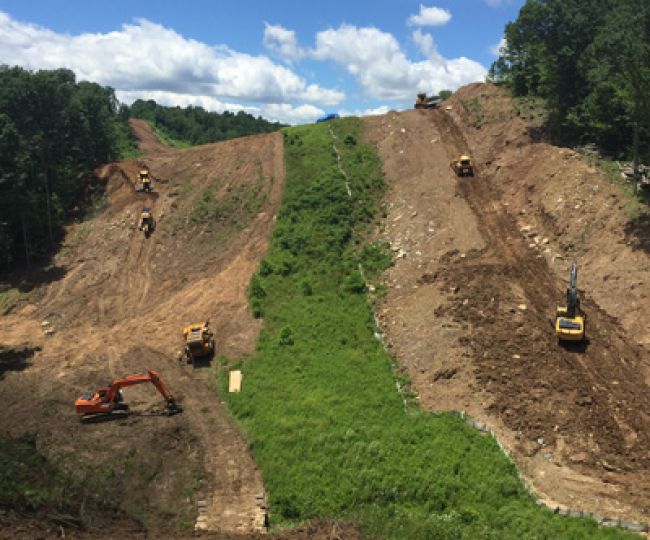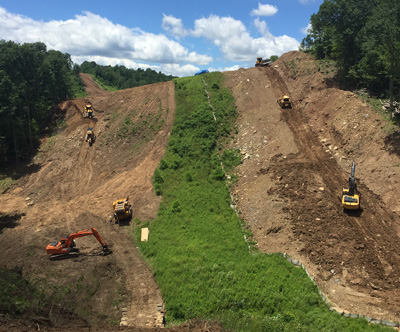
Overcoming the Effects of Rapid Growth

Once upon a time, there was a construction company that did great work. The employees delivered their projects on time without change orders, and they completed them without harming people or the environment. All their happy clients gave them more and more work, which the company gladly accepted, believing that surely the fairy tale would continue. But then the company discovered that this rapid growth had spread them so thin that their production, safety and environmental quality had faded away. This moved them from best to worst in the eyes of their clients, and the company almost went bankrupt due to injuries, lawsuits and loss of contracts. The end.
Not all stories have a happy ending. And many of you well know that the current project-load reality in the utility construction industry certainly isn’t a fairy tale. However, there still can be a positive outcome for your company – even in extreme growth cycles – if you and your leaders master the skills of operational assessment and communication.
Earlier this year I ran Supreme Industries’ numbers and found that our work hours were up 56 percent over the same period last year (January-May). I was shocked – not because of the rapid growth, but because I didn’t receive any warning signals from our safety scoreboard. Don’t get me wrong, I knew things were busy, but other than the fact that I was ordering a lot more health, safety and environmental (HSE) supplies than last year, I didn’t see the magnitude of our growth in my daily life. But why didn’t I?
Flashback three years: I’m sitting with Nate Boucher, Supreme Industries’ vice president of civil and drilling, and Gavin Boucher, vice president of clearing and operations, and Nate says, “Jesse, our field leadership wants more professional development. We’ve done ‘StrengthsFinder 2.0’ and ‘Emotional Intelligence,’ but what’s next? We believe our divisions are going to be growing for the foreseeable future. Gavin and I are taking care of equipment and infrastructure planning, but we want you to prepare our field leaders professionally for what’s coming.” After that conversation, I took some time to outline what we needed to do in terms of future professional development.
Getting back to the present day, I believe the conversation I had with Nate and Gavin three years ago plus the actions we took after the conversation was over are the reasons why I didn’t notice a rapid growth cycle on our safety scoreboard earlier this year.
So, what were the actions we took after the conversation was over? We spent the better part of a year adding VitalSmarts’ Crucial Conversations training (www.vitalsmarts.com/crucial-conversations-training/) to our professional development toolbox, training all of our leaders – from foremen through executives – about how to get results by being persuasive instead of abrasive. Throughout the rest of this article, I’ll explain our approach and how you can do the same within your company.
Compare Your Vision to Reality
Once you realize you’re in a rapid growth cycle, there are a few questions you need to ask yourself as well as some reminders you should provide to your field leadership.
At Supreme Industries, our vision statement is “Get the job done right and go home unharmed every day.” So, when I became aware of our growth, I asked our field leaders to complete a self-check to see if they were still delivering our vision to our workers, clients and company. I encouraged them to keep their assessment simple. If their workers were running themselves ragged (e.g., overtime was up), and if they were not achieving the production levels and HSE quality that earned the company the growth it was experiencing, then our crews were probably stretched too thin, which in turn could put employee families and the company at risk. I told our field leaders that if their crews met these conditions, they needed to ask themselves the following three questions to help them assess operations and get back on track.
1. Can I adjust my methods?
The way I approach my work at the company varies from project to project. Therefore, when I ask myself this question, or another field leader asks the question, we’re forced to look at how we’re planning and executing. Perhaps we can fix our problems simply by adjusting our methods. If this is the case, then we need to communicate those changes to our workers.
2. Do I need more boots on the ground?
Sometimes an increased demand can be subtle, and a field leader may not notice the need to increase the number of hands required to do the work. If the leader decides that his or her methods aren’t the problem, then it’s time to determine how many of what type of workers are needed to get back on track. Once that’s done, the field leader needs to communicate that need to management.
3. Am I getting the support I need?
It would be nice if we could complete projects without support, but the reality is that we need the support of management, maintenance, HSE, subcontractors, vendors and governmental agencies, among others, and all of these parties have duties and agendas that may conflict with our needs. Think about it – their job is to support field operations, and if the field is expanding, so are requests for service. Before long, they have to ask themselves the same three questions about their methods, people and support that I’m discussing right now. If a field leader discovers he needs support, he must communicate that to the appropriate group.
Keep Your Conversations on Track
At this point you may be thinking, “Figuring out what I need and who I should talk to about it isn’t the problem. Where it gets dicey is when the conversation takes a nosedive because we start arguing over the details, or I start off collaborating, but then the other guy says, ‘I’m too busy and I can’t help you.’ Then a fiery mushroom cloud lights up the room, and instead of leaving the conversation with a plan for success, there’s just a big relationship mess to clean up at some inopportune time in the future.”
I’ve experienced the same difficulties, which is what drove me to VitalSmarts in the first place. Following are some of their Crucial Conversations pointers that may help you get the results required to overcome the effects of your company’s rapid growth.
Stay focused on what you really want.
Allowing your conversation to be derailed by trying to win an argument likely will result in the loss of the support you need to succeed. Instead of getting sidetracked, ask yourself this question: What do I want for me, for the other person and for the company? Write down your answer. Now, if you truly believe your answer, how should you behave during the conversation?
Share your facts.
Facts are actual occurrences – things that can be observed or measured. Facts should drive your conversation, but don’t be dogmatic about them. Remember that observations can be incorrect; what you actually saw can differ from what you thought you saw, and measurements can be invalid and/or unreliable.
Tell your story.
Your story is how you pieced together your facts. Stories are composed of conclusions (how do these facts fit together?); judgments (is this thing or occurrence good or bad?); and attributions (why did he/she/they do this?). Stories may be a necessary part of your conversation, but if you give them the same level of credibility as facts, then your conversation could turn nuclear before you realize it, because anyone can build an infinite number of stories out of the same set of facts.
Ask for and listen to the other person’s facts and story.
It’s vital that you understand your facts and stories so that you can express yourself, but it’s just as important that you listen to facts and stories that can help you understand the reality of the person with whom you’re having a conversation. Often, especially when you’re having conversations with the groups that support your department’s work, you will find that the challenges and opportunities they face are the very barriers that are blocking your road to success.
Encourage the other person to talk.
Leaders can cast large shadows, past bad conversations can taint future ones and some people are just naturally guarded. These things can cause another person to refuse to engage in a conversation. However, if you approach this person with an open and encouraging attitude, then you stand a better chance of drawing out their knowledge, experience and working reality.
Learn to look.
Watch to ensure the other person isn’t going silent or violent – by this I mean verbally silent or violent, not physically so. If you think of a conversation as two water spigots filling a bucket, silence is when someone shuts off their own water, and violence is when someone turns their spigot on full blast and sometimes even reaches across to shut off the other person’s water.
Make it safe.
A perceived lack of safety is the primary reason conversations turn silent or violent. Think about it: When you’re confronting someone or being confronted, you might get that fight feeling as your vision narrows, your jaw clenches and your mind shifts toward battle. Or maybe you experience a flight feeling in the pit of your stomach instead. Either one of these feelings has the potential to kill a conversation, so how can you build safety into your approach?
- Check mutual respect. A lack of respect – perceived or real – is the No. 1 way to turn collaboration into confrontation. To remedy this, back away from the topic being discussed and address the respect issue by either genuinely apologizing or exploring the other person’s perceived disrespect. When respect is re-established, the conversation stands a better chance of ending in success, because respect is a fundamental part of relationships that helps us achieve that which we cannot accomplish alone.
- Establish mutual purpose. Often, battle lines are drawn in conversation, not because the other person believes your project to be unimportant, but because they have competing priorities and limited resources. The conversation gets derailed because the other person gets frustrated with themselves; they want to help you succeed, but they just can’t. Instead of accepting the limitations before you, brainstorm new ways to meet both of your needs.
- Clarify your meaning. Even the best communicators sometimes aren’t as clear as they would like to be, and we all misunderstand from time to time. If you receive a reaction from the other person that you weren’t expecting, or if things start heading down a path that likely won’t lead to success, try contrasting what you said with what you meant to say.
Move to action.
Lastly, determine who’s going to do what by when, and how you plan to follow up.
The Time is Now
If you’re in the utility construction industry, it’s likely that your once-upon-a-time is actually here and now, and I hope you will seize the opportunity to develop and test your leadership team through consistent operational assessment and effective communication, so as to improve your company’s quality and growth today and into the future.
About the Author: Jesse Hardy, CET, CSP, CUSP, is vice president of HSE for Supreme Industries, a Harwinton, Conn.-based contractor that specializes in right-of-way clearing, building access roads and drilling.

